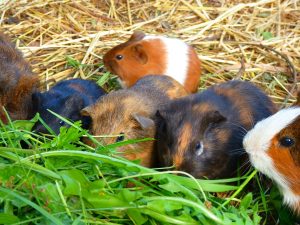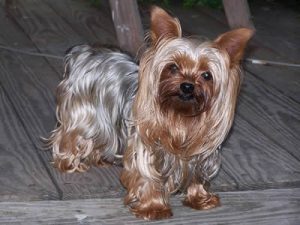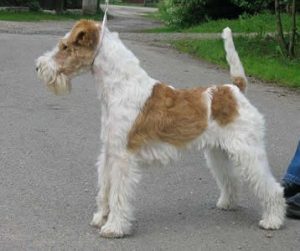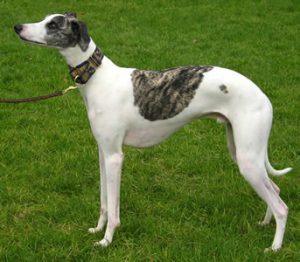 Keeping a guinea pig as a pet is not as difficult as grooming it. A well-groomed guinea pig can become an object of admiration in your home, but a badly groomed guinea pig will shower you with plenty of bad compliments. So, why take the chance of spoiling your impression as a bad pet lover? Simply, learn some tips of grooming your cute guinea pig. Not only are the well-groomed guinea pigs pretty to look at but are healthy and happy reflecting that you care for them. Read on to know about some grooming tips for your own guinea pig. [Read more…]
Keeping a guinea pig as a pet is not as difficult as grooming it. A well-groomed guinea pig can become an object of admiration in your home, but a badly groomed guinea pig will shower you with plenty of bad compliments. So, why take the chance of spoiling your impression as a bad pet lover? Simply, learn some tips of grooming your cute guinea pig. Not only are the well-groomed guinea pigs pretty to look at but are healthy and happy reflecting that you care for them. Read on to know about some grooming tips for your own guinea pig. [Read more…]
Yorkshire Terrier

The Yorkshire Terrier is a small dog breed of Terrier type, developed in the 1800s in the historical area of Yorkshire in England. The defining features of the breed are its small size and its silky blue and tan coat. The breed is nicknamed Yorkie and is placed in the Toy Terrier section of the Terrier Group by the Fédération Cynologique Internationale and in the Toy Group or Companion Group by other kennel clubs, although all agree that the breed is a terrier. A winning showdog and a popular companion dog, the Yorkshire Terrier has also been part of the development of other breeds, such as the Australian Silky Terrier.
Coat care
If the coat is the correct silky texture, maintenance for it is relatively easy, requiring a daily brushing and a bath every month. Owners may trim the fur short for easier care. For shows, the coat is left long, and may be trimmed to floor length to give ease of movement and a neater appearance. Hair on the feet and the tips of ears can also be trimmed.
The traditional long coat is extremely high maintenance. To prevent breakage, the coat may be wrapped in rice paper, tissue paper, or plastic, after a light oiling with a coat oil. The oil has to be washed out once a month and the wraps must be fixed periodically during the week to prevent them from sliding down and breaking the hair. Elaborate care of the beautiful coat dates from the earliest days of the breed. In 1878, John Walsh described similar preparations: the coat is “well greased” with coconut oil, the dog is bathed weekly, and the dog’s feet are “carefully kept in stockings.”
Other colours
The Yorkshire Terrier is a tan dog with a blue saddle. Parti colours exist, although they are not correct for the breed standard. The parti colour coat Is white with black/blue and tan. It’s very rare to get a a parti colour yorkie, and if they are found they tend to be very expensive. The breed is defined by its colour, and colours promoted as “rare” may indicate health problems or cross-breeding with other breeds of other colours. The AKC registration form for Yorkshire Terriers allows for four choices: blue and tan, blue and gold, black and tan, black and gold. Colour alone will not affect whether or not a dog is a good companion and pet. Even though off-coloured Yorkshire Terriers are advertised at premium prices, being of an unusual or untypical colour is neither new, desirable, nor exotic.
Until recently, mismarked Yorkshire Terriers could be crossed with Biewer Terriers, a new breed originated in Germany from parti coloured Yorkshire Terriers. Although the American Kennel Club will not deny registration of a Yorkshire Terrier on colour alone, the Yorkshire Terrier Club of America has a directive that “any solid colour or combination of colours other than blue and tan” for adult dogs is a disqualification, and “dogs of solid colour, unusual combination of colours, and parti-colours should be disqualified.”
Character
The ideal Yorkshire Terrier character or “personality” is described with a “carriage very upright” and “conveying an important air”. Though small, the Yorkshire Terrier is intelligent and active, loves attention and should not show the soft temperament seen in lapdogs.
—————————————————————————————————————–
CARING FOR YOUR DOG NEWSLETTER – Delivered Directly To Your Inbox – Starting Immediately – SIGN UP FOR FREE TODAY
—————————————————————————————————————–
Wirehaired Pointing Griffon

The Wirehaired Pointing Griffon (FCI No. 107) (an English translation of the original name, Griffon d’arrêt à poil dur Korthals, also called Korthals Griffon in the UK) is a breed of dog used in hunting as a gundog. It is Dutch in ancestry, but is regarded as a French breed because the breed’s development took place in France. The Wirehaired Pointing Griffon is particularly adapted for swampy country, where its harsh coat is excellent protection.
Appearance
The Wirehaired Pointing Griffon is a medium-sized dog with a harsh, wiry coat. The coat is preferably grey with tan to brown markings and a brown head. Other acceptable colours: chestnut brown, white and brown, roan, and white and orange. A black coat is never acceptable. If the coat is tri-coloured the dog is not a pure bred griffon. The Griffon should have flat ears that lie close to the head, and eyes that are either yellow or brown. Its nose must be brown.
Health and temperament
The Wirehaired Pointing Griffon is a superb swimmer and retriever and it loves to play in the water. Wirehaired Pointing Griffons are known as intelligent, extremely eager to please, friendly dogs. They are also known for their slightly less excitable temperament when not in the field, which makes them a very comfortable dog when home.
—————————————————————————————————————–
CARING FOR YOUR DOG NEWSLETTER – Delivered Directly To Your Inbox – Starting Immediately – SIGN UP FOR FREE TODAY
—————————————————————————————————————–
Wire Fox Terrier

The Wire Fox Terrier is a breed of dog, one of many terrier breeds. It is an instantly recognisable fox terrier breed. Although it bears a resemblance to the Smooth Fox Terrier, they are believed to have been developed separately.
Appearance
The wire fox terrier is a sturdy, balanced dog weighing between 7 and 9.5 kg (15 and 21 lb). Its rough, broken coat is distinctive. Coat colour consists of a predominant white base with brown markings of the face and ears, and usually a black saddle or large splotch of colour; there may be other black or brown markings on the body. The wire in the photo at left sports the traditional white, black and buff tri-colour coat. The wire in the upper right hand photo appears to be a ginger, a wire without black markings.
Temperament
Two of the Wire Fox Terriers’ most distinctive traits are their enormous amount of energy and intelligence. They have a low threshold for boredom and require stimulation, exercise and attention. The Wire Fox Terrier should be alert, quick, and ready to respond accordingly while being keen of expression and friendly and forthcoming. They can be very loving and exceedingly playful if they receive the proper care. They are bred to be independent thinkers, capable of tactical manoeuvring for vermin and other sport. Their high level of intelligence makes them a dog that is not suited for everyone. Wire Hair Fox Terriers are hand stripped; if the hair becomes too long, their hair should be taken out by hand.
—————————————————————————————————————–
CARING FOR YOUR DOG NEWSLETTER – Delivered Directly To Your Inbox – Starting Immediately – SIGN UP FOR FREE TODAY
—————————————————————————————————————–
Whippet

The Whippet is a breed of dog in the sighthound family. They are active and playful and are physically similar to a small greyhound. Their popularity has led to the reuse of the Whippet name on a large number of things, from cars to cookies.
Appearance
Whippets are a medium-size dog averaging in weight from 25 to 40 lb (11–18 kg), with height (under the FCI standard) of 18.5 – 20 inches (47 – 51 cm) for males and 17.5–18.5 inches (44–47 cm) for females. Whippets tend to be somewhat larger in the United States and Canada with their population in show, coursing and some race whippets required to be within the AKC standard of 18.5 to 22.5 inches (47 to 57 cm) for males, and 17.5 to 21.5 inches (44 to 55 cm) for females. Because colour is considered immaterial in judging Whippets, they come in a wide variety of colours and marking patterns, everything from solid black to solid white, with red, fawn, brindle, blue, or cream. All manner of spots and blazes and patches are seen, sometimes all in the same litter.
Temperament
Whippets are generally quiet and gentle dogs, and may be content to spend much of the day resting. Although especially attached to their owners, they are friendly to visitors. They are not prone to snapping, so they are good with young children. Because of their friendly nature, whippets are known to have been used in aged care facilities. They may bark when strangers arrive but are not suited to being guard dogs. They do, however, tend to attack cats that stray into their territory, unless they have been raised with cats.
Unlike some other breeds, male whippets are as easy to housebreak as females. Male whippets are also as unaggressive as female whippets. Males are sometimes considered to be slightly more loyal and enjoy repetitive play. Females can be a little more complex, moody and strong-willed. Males tend to be one to two inches taller and three to six pounds heavier than females.
Whippets are not well-adapted for living in a kennel, or as outside dogs. Their coats do not provide insulation to withstand prolonged periods in cold temperatures. Their natural attachment to people makes them happiest when kept indoors. They are most at home in the company of their owners—in their lap or lying next to them on the lounge. Whippets are quiet and thus well suited to apartment life, although like all dogs they need regular, healthy exercise. The chance to run free in open spaces should be made available to the whippet; however care should be taken with whippets on the street as it is difficult to instil any sort of traffic sense into them.
Whippets have been called a “poor man’s greyhound.” As their heritage would suggest, whippets are outstanding running dogs and are top competitors in lure coursing, straight racing, and oval track racing. Typically in these events, a temporary track and lure system is set up. The lure is usually a white plastic trash bag, sometimes in conjunction with a “squawker” to simulate a sort of prey sound or with a small piece of animal pelt. With the advent of new methods in motivational obedience training being used, whippets are becoming successful obedience dogs. Many enjoy flyball and agility.
A May 7, 2007 article in Science Daily reported on a genetic mutation that may account for the abnormally high athletic ability of whippets.
The elegance and ease of grooming of the whippet have made it a somewhat popular in the sport of conformation showing. It has, however, never quite gained the popularity of such dog show stalwarts as the poodle.
—————————————————————————————————————–
CARING FOR YOUR DOG NEWSLETTER – Delivered Directly To Your Inbox – Starting Immediately – SIGN UP FOR FREE TODAY
—————————————————————————————————————–
- « Previous Page
- 1
- …
- 19
- 20
- 21
- 22
- 23
- …
- 67
- Next Page »
